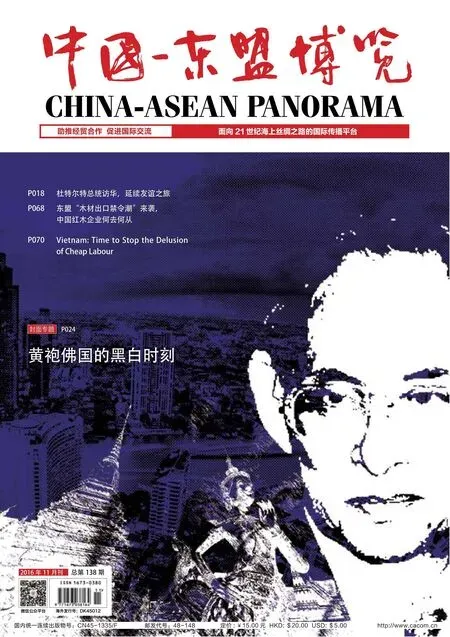Vietnam: Time to Stop the Delusion of Cheap Labour
By Dung Phan
Vietnam: Time to Stop the Delusion of Cheap Labour
By Dung Phan
Experts started talking about the end of cheap labour in China many years ago. Since then, Vietnam has stepped up as a potential alternative, with its low labour costs and government incentives. Yet Vietnam needs to look far beyond just replicating the scale of production taking place in China in the past.
Ever since China faced a decline in its role in manufacturing, Vietnam has become the darling of foreign investors in search of the next hot emerging market. Over the last fi ve years, the country’s exports have more than doubled as cheap labour and low-cost infrastructure have drawn foreign direct investment (FDI) into the manufacturing sector, according to
Bloomberg Business, which reported in April that Vietnam’s purchasing manager’s index (PMI) has been above 50 every month since August 2013.
In addition to a strong base in furniture, textiles, and garment production, Vietnam is one of the leading exporters of cashew nuts, rice, coffee, seafood, fruits, and vegetables. The country also has considerable FDI, especially in high-tech industries as Microsoft, Samsung Electronics, LG Group, Intel, Canon, Panasonic and Toshiba continually expand operations in the country. Samsung has, in recent years, turned Vietnam into one of its largest production hubs by investing nearly US$ 15 billion.
In April, Credit Suisse Group said Vietnam’s growing popularity as a global manufacturing hub was one of the reasons for the growth. “The manufacturing sector, which accounts for 24% of Vietnam’s GDP, attracted 57% of the FDI inflows last year. The country stands to gain even more investment from the Trans-Pacific Partnership,” Credit Suisse Group said.
However, these achievements, while a sign of the country’s remarkable economic success, also hint at deeper imbalances.
It’s worth looking at the link between the absence of a strong high-skilled workforce and a large pool of lowskilled workers glorified and categorised as “cheap labour” in the manufacturing sector. Many experts are concerned that the government’s focus on breakneck growth may conceal the ills of low-skilled labour —including child labour — by associating “cheap labour”with “a rich source of foreign investment that will boost the economy.” And it is problematic to equate cheap labour with competitiveness.
The quality of the Vietnamese workforce, according to some international indicators, remains low and lags far behind the region. World Bank rated the quality of the country’s labour at 3.39 points on the 10-point grading scale, ranking 11thamong 12 rated Asian countries, much lower in comparison with South Korea at 6.91 points, India at 5.76 points and Malaysia at 5.59 points.
The country’s productivity was also low, just onefi fteenth of Singapore, one-fi fth of Malaysia and twofifths of Thailand, being grouped in the four bottom ASEAN countries for its low capital, scientific and technological and labour levels.
According to Trinh D. Nguyen, an economist at HSBC, Vietnam now faces a skilled labour shortage as tertiary education is not keeping up with corporate demand. Not only short of skilled labour, even trained workers fail to meet requirements on job-related skills and have to be retrained in many cases, analysts pointed out.
Poor English profi ciency, lack of cognitive skills, such as problem solving and critical thinking, and core skills— teamwork and communication — as well as lack of work discipline are other disadvantages for Vietnamese workers to compete with those from Singapore, Indonesia, Thailand and Malaysia.
Talking about this issue, Dang Ngoc Tung, the president of Vietnam General Confederation of Labour said: “I do not know how members of the government think, but I feel lamentable and the nationalism concerns me. Is that the workers who are responsible for the low productivity? Or (because of) the government who administrates economy? This is a major question that I suggest them to answer in the next fi ve years.”
Inflation driving wages higher but labour skills not advancing as quickly also threatens the growth and adds to a list of challenges policymakers face.
The government has been struggling to address Vietnam’s wage competitiveness. This year, they decided to raise the minimum wage by up to 13%, despite calls for a higher increase from labour unions. In 2015, Vietnam’s average monthly wage of US$ 96 to US$ 138 compares to minimum levels of US$ 121.90 in Cambodia, US$ 135.43 to US$ 296.96 in China, and US$ 265.68 in Thailand.
However, the country cannot hold onto low wages forever. Expectations have risen along with incomes. A series of strikes and disputes over the past year show that Vietnamese workers are increasingly vocal about their rights.
According to ministry statistics, there were almost 50 strikes and labour disputes in the fi rst two months of the year. One of these strikes involved nearly 20,000 workers of a Taiwanese footwear factory in southern Vietnam in February. “Most strikes so far this year related to 2016 minimum wage adjustments, salaries, and employee bonuses,” said Deputy Minister of Labour, Invalids and Social Affairs Pham Minh Huan.
Analysts acknowledge the bottom line is that competing in terms of low wages is a risky business and should only be considered an edge in the short-term for a developing country like Vietnam. According to Dr. Vo Tri Hao, a lecturer at Ho Chi Minh City’s Economics University, if Vietnam continues to rely on cheap labour, there will be no pressure for technology innovation and move to more advanced techniques.

“If we keep abuse of cheap labour and importing outdated technology we will be unable to improve productivity,”stressed Tung. “It would be much worse if we continue to rely on outdated Chinese technology and cheap labour in the next few years.”
Source:www.aseantoday.com

